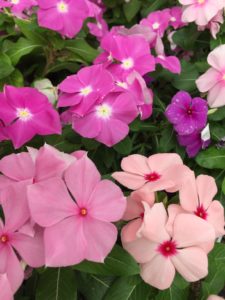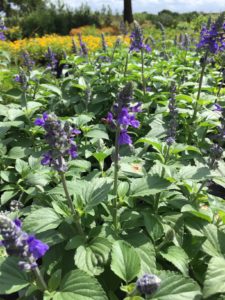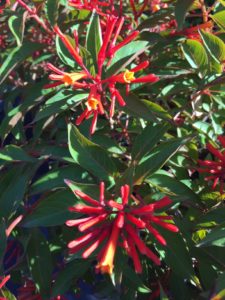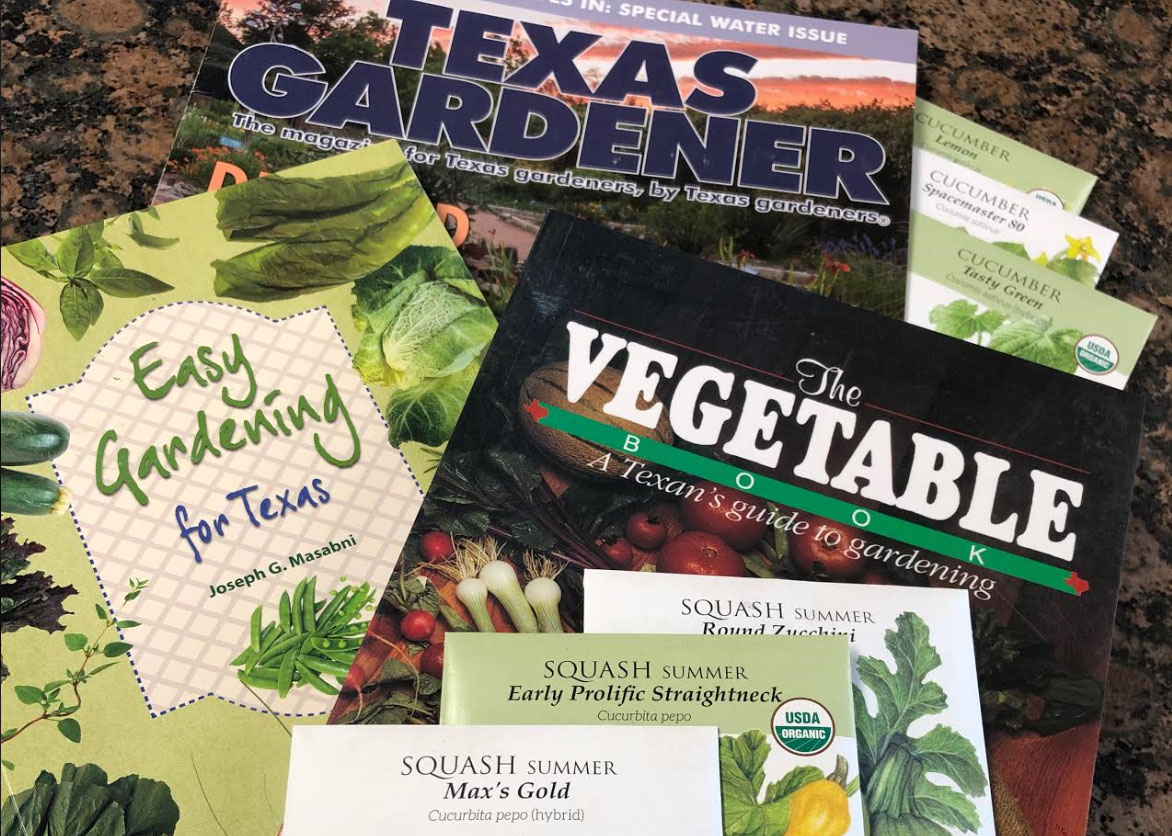Annuals and Perennials:
Some of the best heat-loving annuals are ready to be planted now! Vinca, Angelonia, Penta, Sweet Potato Vine, Coleus, Wax Begonias, Purslane and Portulaca will easily make it through our hot summer with attentive watering and monthly fertilization. Even Geraniums, when moved to dappled shade or part sun will produce abundant blooms all summer if deadheaded and fertilized monthly.
Perennials should be establishing well if planted in the spring. If planting now, continue hand-watering daily for several weeks. Watering deeply once or twice a week after that with irrigation, depending on temperature, should suffice. Fertilize established perennials once this month. Deadhead as necessary and shape between bloom cycles. Learn how to “ponytail” prune HERE.
There is still time to plant heat-tolerant perennials such as Salvia greggii, Mystic Spires Salvia, Lantana, Mexican Firebush, Pink Skullcap and Mexican Bush Sage.
Vegetables:
This spring has been milder than the previous two years. I’m sure that you still have some tomatoes ripening and peppers producing well. Keep tomatoes evenly moist to avoid blossom end rot. Replenish mulch as needed. Tomatoes and peppers are entering their big harvest season. Bird netting will help keep the birds off the tomatoes.
Click HERE for some good information on tomato ripening and knowing when to pick them.
Watch for stink bug and leaf footed bug eggs on your plants, and try to knock them off before they hatch. Remember, it is easier to deal with the eggs and nymphs than the adults! Invest in a “hand vac” to vacuum up the adults, then dump them into soapy water.
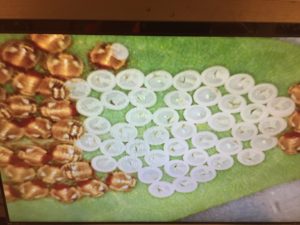
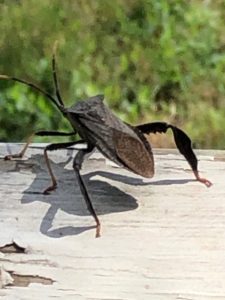
Continue to fertilize monthly to increase plant vigor and yield. Watch for spider mites on tomatoes and eggplant. Treat with insecticidal soap or spinosad soap at the first sign of insects. Spider mites feed heavily in dry, hot weather, so keep an eye out! Control caterpillars with Bt or Spinosad. Watch for holes in leaves, and treat when caterpillars are young, as the products kill the young ones sooner than the mature ones.
Trees and Shrubs:
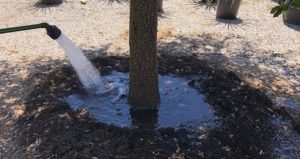
Trees and shrubs may be planted at any time of the year in Central Texas, as long as you will be there to hand water throughout the summer or have a reliable bubbler or drip system to keep them hydrated.
Remember that we have consistent summer winds that remove moisture from leaves. If you know that we will have strong winds, be sure to water that morning and send newly planted trees and shrubs into the day hydrated! When planting trees and shrubs, build a “berm” around the planted root ball about 4” high. This will create a basin to fill with water and avoid run off. When hand watering, fill the basin several times. If bubbles appear, you are displacing air pockets in dry soil, and need to continue filling the basin until no more bubbles appear!
Keep mulch pulled back 3” from the trunks of trees and shrubs to avoid degradation of the vascular system. Avoid overhead watering that wets the leaves to minimize disease. Shade trees with leaf spot in the summer seldom warrant treatment, as it is rarely fatal. Remember to clean up fallen leaves in the fall to prevent overwintering of the fungus that can infect the tree next year.
Mature trees do not require additional fertilization in the summer. Trees planted less than five years ago benefit from a summer application of organic fertilizer to boost their growth in the early years. MicroLife fertilizer contains beneficial microorganisms and mycorrhizal fungi to aid in uptake of water and nutrients.
Lawns:
Water lawns to a depth of 4”-6” to develop a deep root system that will tolerate drought. Watering frequency will depend on the type and depth of soil and type of lawn grass. Click HERE for lawn watering guidelines. Water St. Augustine when it reached its “threshold”, that is, when the leaf blades fold lengthwise. Bermuda grass shows its “threshold” when a footprint in the grass does not bounce back. Allowing lawn grasses to reach their “threshold” between watering will build a deeper, healthier root system. Manage summer weeds by mowing before they bloom and set seed or digging by hand. Selective broadleaf herbicides may damage lawns above 85 degrees.
Fruits and Nuts:
Watch for summer pests such as spider mites and scale insects, and continue watering moderately throughout the summer. If you find that you have pests, get them identified so that you can anticipate them next year. Most control is directed at PREVENTION and must be started before the insects are seen.
Pecans require sufficient water in the summer months to continue to grow in size. Lack of supplemental watering in drought conditions results in small nuts. Give established trees a deep soaking under the drip-line if we haven’t had rain in a couple of weeks. Pecan kernels will start filling out in late summer, and watering is especially important at that time.



